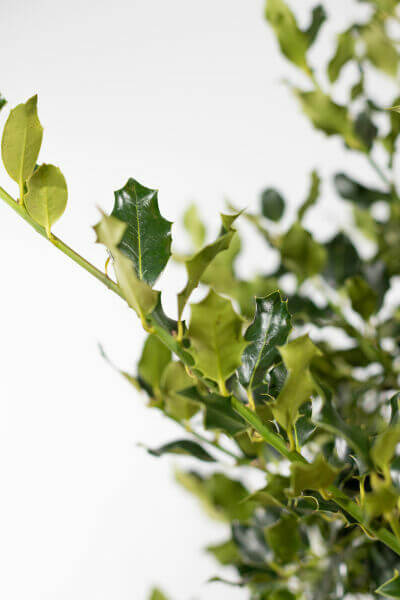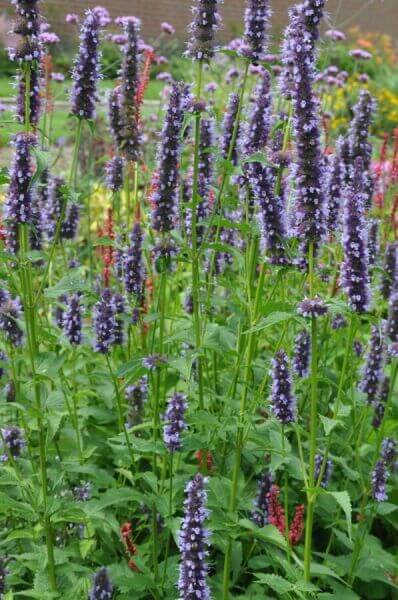Best Hedge Plants For Informal Hedges
Enhance your garden's allure with rich hedge ranges such as Yew (Taxus), Thuja, Laurel, Photinia, and Bamboo, celebrated for their structural integrity and ecological benefits.
Yew and Thuja provide evergreen protection and winter resilience, while Laurel provides rapid development and broad, aromatic leaves.
Photinia includes seasonal charm with its lively red foliage, and Bamboo lends a low-maintenance, tranquil ambiance.
These hedges improve air quality, reduce noise, and develop tranquil, private areas.
Correct planting, spacing, and maintenance guarantee energetic growth and environmental consistency.
Explore how these lush ranges can raise your garden's beauty and well-being.
Secret Takeaways
Change Your Garden With Lush Hedge Varieties
- Select Yew for its dense, evergreen development and unparalleled longevity.
- Select Laurel for its quick development and broad leaves, making sure fast privacy.
- Select Photinia for its dynamic seasonal foliage, which turns a striking dark red.
- Make use of Bamboo for a low-maintenance, winter-hardy hedge with visual appeal.
- Area plants 2-3 per meter and prune regularly for optimal growth and health.
Popular Hedge Plants
When transforming a garden with rich hedge ranges, it's vital to consider popular hedge plants such as Yew, Thuja, Laurel, and Photinia due to their unique characteristics and benefits.
Yew (Taxus) is highly esteemed for its longevity and dense, green growth, making it a prime option for sustaining landscapes.
Thuja is kept in mind for its evergreen foliage and robust winter season strength.
Photinia includes seasonal vibrancy with red leaves that darken with time, developing vibrant visual appeal.
Laurel uses fast growth and fragrant, broad leaves, ideal for fast personal privacy.
In Addition, Bamboo is an exceptional option for ambiance, offering a low-maintenance, winter-hardy alternative that boosts the garden's visual with its stylish, swaying walking canes.
These choices accommodate a range of horticultural needs and preferences.
Benefits of Garden Hedges
Garden hedges use a plethora of benefits, making them a valuable addition to any landscape. These natural barriers are economical to implement and offer substantial wind protection, boosting air blood circulation and adding to noise reduction. The thick foliage of hedges like Thuja and Beech makes sure personal privacy by obstructing visibility, developing a remote and peaceful environment.
Hedges likewise play an important function in microclimate guideline, offering a stable environment that fosters plant development and lessens temperature level variations. Their intricate leaf structures filter pollutants, improving air quality and contributing to a healthier garden environment.
Additionally, hedges master sound decrease, absorbing and deflecting acoustic waves to lower ambient sound levels. This double functionality of providing both acoustic and visual privacy improves the total tranquility and aesthetic appeal of any garden.
Planting and Maintenance Tips
For an effective hedge, precise preparation of the planting location is crucial. Make sure the soil has proper pH and drain to support strong root development.
Space the plants appropriately for the selected types. Water the hedge frequently throughout its preliminary development stage, adjusting as required with seasonal modifications.
Carry out a organized pest control and disease prevention strategy, using natural or chemical treatments when needed. Frequently check for aphids, termites, and fungal infections.
Apply mulch to maintain wetness and suppress weeds. Seasonal pruning promotes thick development and air blood circulation, essential for plant health.
Following these guidelines will assist you cultivate a lively, properly maintained hedge that boosts the appeal of your garden.
Spacing and Cutting Standards
Spacing and Trimming Standards
Correct spacing and cutting are essential for cultivating healthy, visually appealing hedges. Adequate spacing makes sure each plant gets enough nutrients, light, and airflow.
Follow these guidelines for optimum hedge upkeep:
- Spacing: Position hedge plants 2-3 plants per meter to encourage robust development.
- Pruning Methods: Routine pruning is important for maintaining desired hedge height and shape. Cut brand-new growth in summer and cut down older wood during winter season.
- Seasonal Care: Change cutting schedules and methods according to seasonal requirements to ensure plant health.
- Hedge Height: Frequently screen and trim to preserve the desired hedge height and accomplish uniform aesthetic appeals.
Following these actions will ensure your hedge thrives, improving both the appeal and performance of your garden.
Selecting the Right Hedge
Picking the Right Hedge
Picking the suitable hedge involves examining factors such as fully grown height, foliage density, and environmental durability. Effective hedge plant choice requires comprehending each types' growth attributes and site-specific adaptability.
For example, Yew (Taxus) provides exceptional longevity and dense development, while Thuja is notable for its winter durability. In addition, thinking about maintenance requirements is crucial; fast-growing species like Laurel or Privet demand routine cutting, whereas low-maintenance alternatives like Bamboo or Ivy might be preferable for those seeking minimal upkeep.
Ecological aspects such as soil type, light availability, and wetness conditions need to likewise assist the selection procedure. This mindful technique ensures the chosen hedges will prosper, supplying both visual and practical advantages to the garden landscape.
Shipment and Planting Advice
To ensure your hedge plants prosper, they should be delivered by specialized carriers and planted promptly upon arrival.
Follow these necessary steps for successful planting:
- Soil Preparation: Enrich the soil with natural matter to improve drainage and nutrient material.
- Planting Depth: Produce a trench twice the width and equal to the depth of the root ball.
- Watering Strategies: Water thoroughly after planting, keeping the soil consistently moist but not filled.
- Mulching: Apply a layer of mulch to maintain wetness and reduce weeds.
Client Support and Service
Offered the essential role of prompt assistance in horticultural pursuits, our customer assistance team is available 6 days a week through telephone, email, and social networks to provide expert suggestions and quickly address any issues. Their dedication to fast response times makes sure customer fulfillment by fixing queries connected to plant health, optimal planting techniques, and maintenance schedules.

Action Time
-------------------
Within 24 hr
This detailed support group, reinforced by a stellar 9.3/ 10 customer rating, highlights our dedication to improving the gardening experience for every customer.
Often Asked Questions
How Long Does It Consider Hedge Plants to Establish?
Hedge plants usually require one to 3 years to become totally established, with the specific duration differing by species and growing conditions.
Efficient care throughout this vital duration is necessary for robust growth. Constant watering, alert weed control, and suitable fertilizer application are essential in promoting strong root development.
For instance, fast-growing types like Laurel may develop more quickly, while slower-growing ranges such as Yew may take longer. Diligent upkeep accelerates the establishment procedure, leading to dense and healthy hedges.
What Are the Finest Hedge Plants for Privacy?
The question of the finest hedge plants for personal privacy involves examining evergreen and deciduous options.
Evergreen hedges like Thuja, Laurel, and Cypress provide year-round protection, ensuring constant personal privacy.
In contrast, deciduous hedges such as Beech provide seasonal privacy, shedding leaves in chillier months.
Secret upkeep tips for privacy hedges include regular trimming, fertilizing in spring, and appropriate spacing-- usually 2 to 3 plants per meter.
Furthermore, constant watering and persistent weed elimination are important for promoting healthy, thick development.
Can Hedge Plants Draw In Wildlife to My Garden?
Yes, hedge plants can draw in wildlife to your garden by offering vital advantages like shelter, food, and nesting sites, thus improving local biodiversity. Yew, holly, and laurel are exceptional for drawing in birds, while ivy supports a variety of insects.
However, it is very important to keep in mind that there are some disadvantages, such as increased upkeep to manage pests and routine maintenance. Carefully picking and keeping hedge varieties can help stabilize these downsides and advantages, ultimately cultivating a sustainable and vibrant ecosystem in your garden.
Exist Any Flowering Hedge Plants Available?
Yes, there are flowering hedge plants readily available that can improve the beauty of your garden.
For instance, Elaeagnus, also referred to as Olive Willow, produces fragrant white flowers in the fall, adding a touch of beauty.
Photinia, another popular choice, showcases dynamic red leaves that mature into an abundant green, producing a vibrant visual effect throughout the seasons.
To ensure these plants prosper, it's necessary to practice correct pruning techniques and seasonal upkeep, such as cutting new development in the summer season and cutting back in the winter season.
These measures will help keep the health and aesthetic appeal of your flowering hedges.
How Do I Avoid Bugs in My Hedge Plants?
To prevent bugs in hedge plants, employ natural pest control techniques and keep proper hedge care. Introduce helpful insects like ladybugs, which take advantage of damaging bugs, to produce a well balanced environment.
Regularly examine your hedges for indications of problem and quickly get rid of any affected parts to prevent the spread. Ensure the health of your hedges by applying balanced fertilizers and offering appropriate water.
Make use of mulching to maintain soil wetness and proper spacing to decrease plant stress and promote robust growth. These practices collectively help in reducing pest issues and maintaining a healthy hedge.
Conclusion
In essence, selecting the right hedge varieties such as Yew, Thuja, and Laurel can transform any garden into a tranquil sanctuary. These plants supply year-round plant, improve aesthetic appeal, and deal practical benefits like noise decrease and wind defense.
Appropriate planting methods, accurate spacing, constant watering, and seasonal cutting are crucial for ideal growth.
Trustworthy delivery services and expert consumer assistance ensure a smooth experience from purchase to planting, making it easier than ever to raise your outdoor area.
Garden hedges provide a wide range of benefits, making them an important addition to any landscape. These natural barriers are affordable to implement and supply considerable wind protection, here improving air circulation and contributing to sound reduction. The thick foliage of hedges like Thuja and Beech guarantees privacy by blocking visibility, developing a secluded and tranquil environment.

Pruning Methods: Regular pruning is vital for preserving desired hedge height and shape. Trim brand-new development in summertime and cut back older wood during winter.
Comments on “Best Hedging Plants For Garden Screens”